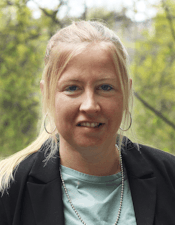Anticipating the “dis-placed” consequences of global biodiversity targets
Anticipating the “dis-placed” consequences of global biodiversity targets
- Our Objective
This project explores the potential spillover effects of global biodiversity targets, both at a global scale and through a regional case study in one of the Wyss Academy’s Solutionscapes: Madre de Dios, Peru. It examines how conservation policies can affect land use not only locally, but also in distant regions. The research is led by a postdoctoral researcher from Vrije Universiteit Amsterdam (VU), in close collaboration with the Wyss Academy.
- Figures
The project was launched on July 1, 2023 and is currently in progress.
Summary
The project employs global land system models to predict and analyze the spillover effects of implementing global biodiversity targets under the Convention on Biological Diversity's Global Biodiversity Framework (CBD GBF).
A spillover effect can occur, for example, when a government aims to protect a forest to conserve wildlife and plants, as envisioned by Target 5 of the Global Biodiversity Framework. To achieve this, the forest is designated as a protected area where activities like farming and logging are prohibited. This has a positive effect on habitat restoration and biodiversity within the protected area. However, local land-dependent communities, such as farmers and loggers, still need to earn a living. Unable to work within the protected zone, they may shift their activities to nearby, unprotected land. As a result, deforestation and land clearing may increase elsewhere, sometimes even at a greater scale than before.
The models used in this project integrate data on land use, biodiversity, and human activities to simulate unintended outcomes, such as land-use shifts that may impact regions far from where the policy was implemented. By combining species distribution models with land-use scenarios, the project evaluates trade-offs between biodiversity conservation and the needs of land-dependent communities, offering insights into the telecoupled impacts of international policies.
A complementary case study in the Wyss Academy Solutionscape in Madre de Dios, Peru, captures local perspectives on the unintended consequences of biodiversity conservation efforts. Through participatory mapping and stakeholder discussions, the study explores how global biodiversity policies manifest at the local level, adding context-specific insight to the broader assessment. This integrated approach bridges global modeling and local realities, providing actionable recommendations to reduce spillover effects and support sustainable, inclusive governance. Outputs include peer-reviewed articles, policy briefs, and workshops to guide effective policymaking.
Project Connections
Timeline
New paper on Land-use spillovers from environmental policy interventions
Project Update July 15, 2025
Environmental policy interventions are crucial for addressing biodiversity loss and climate change, yet their effectiveness can be compromised by land-use spillovers, where efforts to reduce impacts in one place displace them elsewhere. Despite growing recognition of spillovers, they remain unevenly defined, inconsistently measured, and poorly integrated into policy evaluation and accountability frameworks. This systematic review synthesizes current research on land-use spillovers triggered by environmental policies, including carbon pricing, protected areas, supply chain interventions, and payments for ecosystem services. We identify three dominant pathways: leakage, indirect land use change (iLUC), and positive spillovers, emerging under common conditions such as weak enforcement, market integration, limited livelihood alternatives, and accessible frontier lands. These conditions are shaped by broader institutional, economic, demographic, and biophysical drivers, yet are rarely integrated into policy design and evaluation. While methods to evaluate spillover effects range from global scale ex ante models to local ex post spatial and econometric analyses, few studies bridge scales or connect findings to international policy frameworks such as the Convention on Biological Diversity (CBD) or the United Nations Framework Convention on Climate Change (UNFCCC). Cases are concentrated in climate-linked interventions and in South America, leaving important geographic and sectoral blind spots. This limits their relevance for designing policies that minimize displaced impacts and foster more durable outcomes. Advancing spillover research will require common frameworks, more consistent methodologies, and multi-scale tools that can enhance comparability, attribution, and integration into environmental governance.Author: Diana Ramírez-Mejía,Yves Zinngrebe,Erle C. Ellis,Peter H. Verburg / Publication: Global Environmental Change / Publisher: Elsevier / Date: July 2025
Team
- Project contactProject contact
Prof. Dr. Julie Zähringer
Professor of Land Systems and Sustainability Transformations
